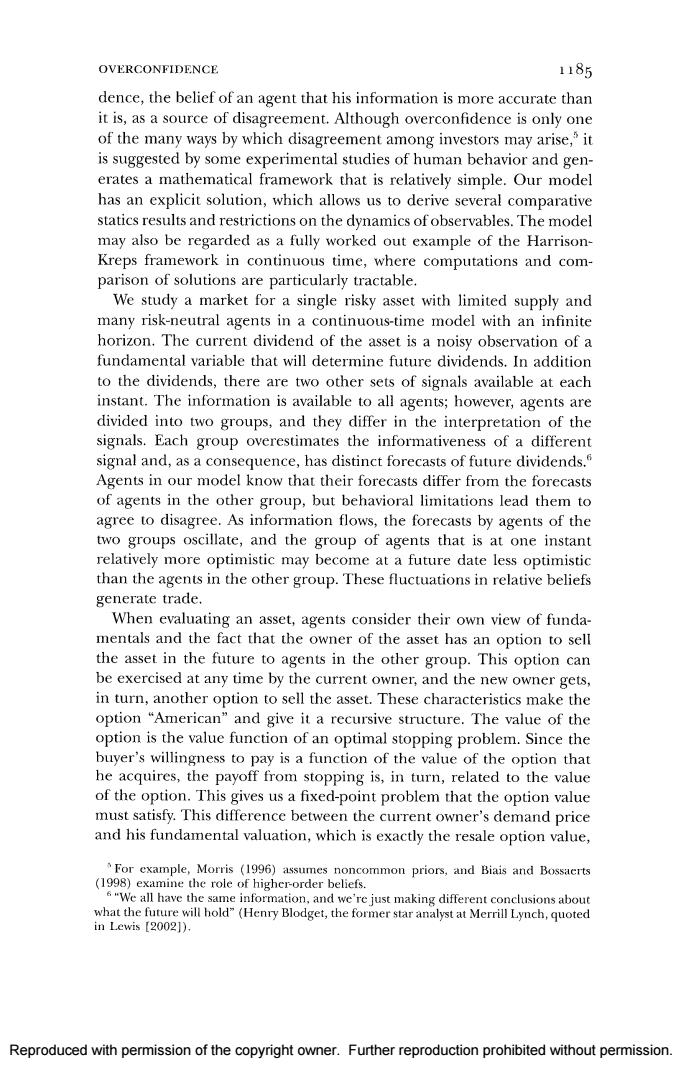正在加载图片...

OVERCONFIDENCE 1185 dence,the belief of an agent that his information is more accurate than it is,as a source of disagreement.Although overconfidence is only one of the many ways by which disagreement among investors may arise,it is suggested by some experimental studies of human behavior and gen- erates a mathematical framework that is relatively simple.Our model has an explicit solution,which allows us to derive several comparative statics results and restrictions on the dynamics ofobservables.The model may also be regarded as a fully worked out example of the Harrison- Kreps framework in continuous time,where computations and com- parison of solutions are particularly tractable. We study a market for a single risky asset with limited supply and many risk-neutral agents in a continuous-time model with an infinite horizon.The current dividend of the asset is a noisy observation of a fundamental variable that will determine future dividends.In addition to the dividends,there are two other sets of signals available at each instant.The information is available to all agents;however,agents are divided into two groups,and they differ in the interpretation of the signals.Each group overestimates the informativeness of a different signal and,as a consequence,has distinct forecasts of future dividends. Agents in our model know that their forecasts differ from the forecasts of agents in the other group,but behavioral limitations lead them to agree to disagree.As information flows,the forecasts by agents of the two groups oscillate,and the group of agents that is at one instant relatively more optimistic may become at a future date less optimistic than the agents in the other group.These fluctuations in relative beliefs generate trade. When evaluating an asset,agents consider their own view of funda- mentals and the fact that the owner of the asset has an option to sell the asset in the future to agents in the other group.This option can be exercised at any time by the current owner,and the new owner gets, in turn,another option to sell the asset.These characteristics make the option "American"and give it a recursive structure.The value of the option is the value function of an optimal stopping problem.Since the buyer's willingness to pay is a function of the value of the option that he acquires,the payoff from stopping is,in turn,related to the value of the option.This gives us a fixed-point problem that the option value must satisfy.This difference between the current owner's demand price and his fundamental valuation,which is exactly the resale option value, For example,Morris (1996)assumes noncommon priors,and Biais and Bossacrts (1998)examine the role of higher-order beliefs. 6"We all have the same information,and we're just making different conclusions about what the future will hold"(Henry Blodget,the former star analyst at Merrill Lynch,quoted in Lewis [2002]). Reproduced with permission of the copyright owner.Further reproduction prohibited without permission.Reproduced with permission of the copyright owner. Further reproduction prohibited without permission